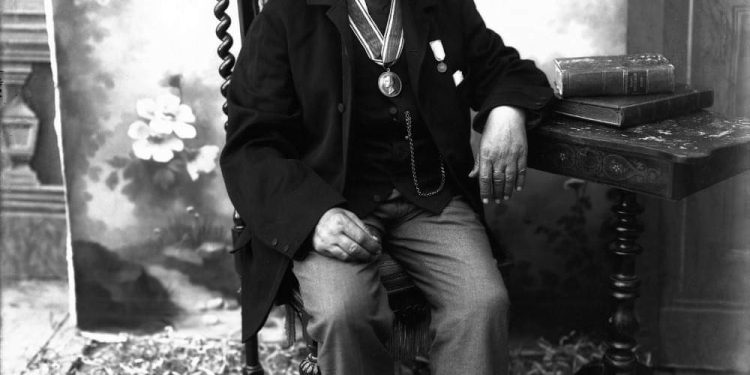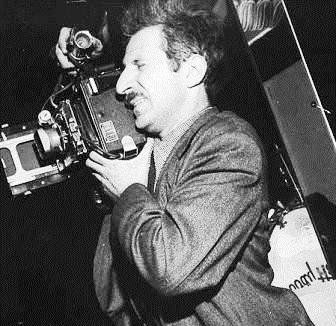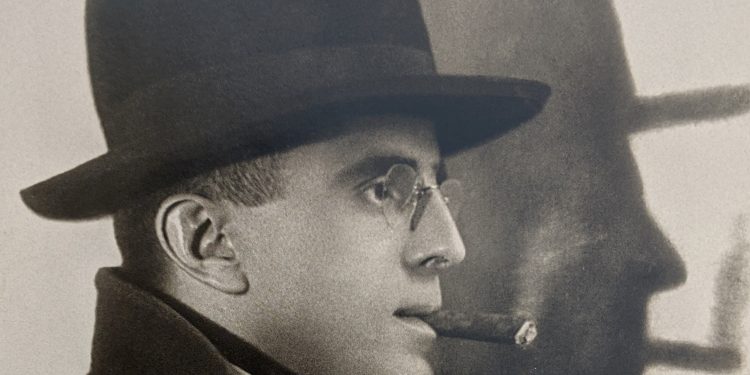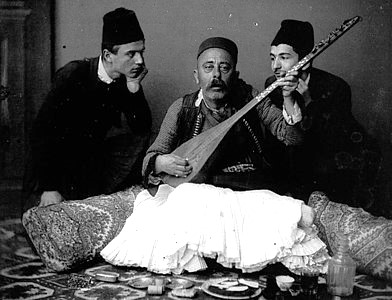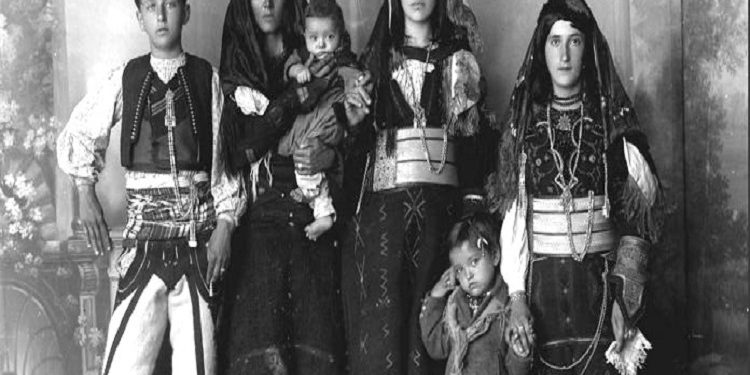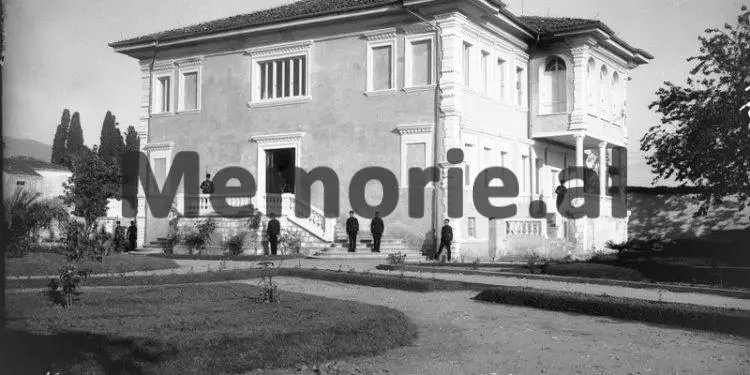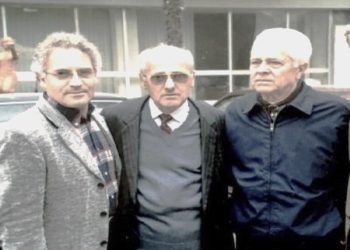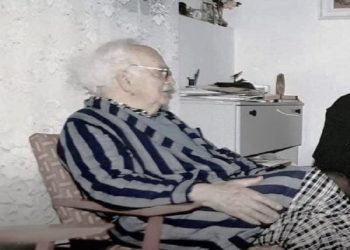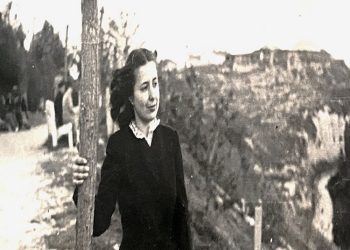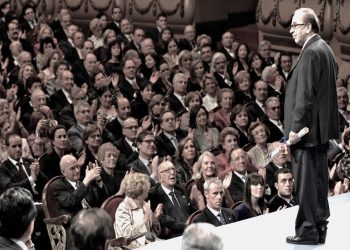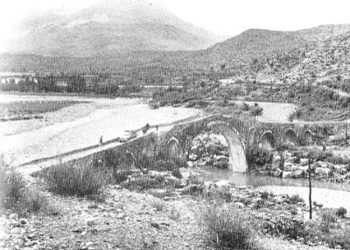By Neritana Kraja
Memorie. al /Although treated as a second-rate art, before the 90s of the 20th century, unlike other visual arts, photography has been a vanguard. It has developed almost in parallel with other European countries, where photography began to develop…! The end of the 19th century and the beginning of the 20th century, counts great names of photographers, even dynasties arose, who have given us the opportunity to see the Albania of those years intact today: landscapes, portraits, lifestyles, clothing…! We will stop at three of them.
Marubi
Pietro Marubbi, an Italian born in Piacenza, Italy in 1834, an ardent supporter of Garibaldi, would forever link his life with Albania and would enter history as the first photographer of our country. Persecution by the Austro-Hungarian forces forced the Italian Marubbi to immigrate to Albania, where he arrived around 1850.
Closely connected to the country that welcomed him and that became his second homeland, Pietro would also Albanianize his name to be known by everyone as; “Pjetër Marubi”.
It is precisely this pioneer of Albanian photography who is recognized for the indisputable merit of bringing cameras to Albania for the first time and, with them, managing to transmit to our days, figures and portraits of prominent people and not only, various landscapes, but also moments from the most important historical events, those that left a mark on the memory of generations. But in addition to his mastery in the art of photography, Pjetër Marubi was also a painter, sculptor and architect.
Located in Shkodra, the cradle of Albanian culture, Marubi opened the first photography studio “Foto Marubi” and there he took what is thought to be his first photo, dedicated to the famous kaçak of those parts, “Hamzë Kazazi” (1858).
After the first shot in 1858, Pjetër Marubi began to leave his studio to take many more photos in nature, which would immortalize entire fragments of Albanian reality, thus giving way to what would later be called by foreigners; “the golden age of Albanian photography”.
Three years after the first shot, in 1861, he created the first photographic landscape, which represents Shkodra. Gradually, Pjetër Marubi began to absorb the Albanian mentality. Most of his photos are printed in black and white, but there are also sepia.
Pjetër Marubi’s photographic creativity includes many genres, such as photo-portrait, natural and urban landscape, ethnography, history, photography with social subjects, etc. The 150 thousand negatives transmitted to our days constitute one of the most authentic and rare testimonies of the history of our country, traditions, ethnography and Albanian culture.
Gjon Mili
Gjon Mili, was born in Korça in 1904, immigrated to the United States in 1923 and studied at the Massachusetts Institute of Technology as lighting engineer and became famous as a photographer for well-known American magazines, such as “Life” and “Fortune”. With his mastery of photography, he dismantled the idea that the moment within the photograph remains eternally frozen.
Mili was a pioneer of flash photography (with light) as well as one of the first to use the stroboscopic technique (a visual phenomenon that occurs when movement is continuous). Stroboscopicity was used as a method, but only in science. It was Mili who popularized it in other fields of photography.
He tried to study the movement and interaction of the human body, photographing dancers, musicians, actors with different techniques. For 15 years he worked as a photojournalist for the famous American magazine “Life”, where he reflected in photographs important figures of art and world culture, such as director Hitchcock, composer Stravinsky, actress Helen Weigel, singers Frank Sinatra and Paul Robson, etc.
In 1949, he was sent by “Life” magazine to photograph the artist Pablo Picasso, with whom he created a series of photos, in Valory, France. Among them was the most famous one, entitled “Picasso drawing with light”, which is found in many albums of world photography.
In 1952, he opened an exhibition dedicated to Picasso at the Paris Gallery, and also participated in the largest collective exhibition of photographers of the last century, entitled “The Family of Man”, opened in New York in 1955.
He remained an Albanian throughout his life, not changing much, starting with his name, which he always wrote “Gjon”, saying that; “it is written and read like this, only in Albania”. Gjon Mili died in Stamford, Connecticut, USA, on February 14, 1984.
Kristaq Sotiri
Korça is a special city that stands out for its cultural diversity. Kristaq Sotiri was born in a period of great change, in 1883, in the village of Mborje. He immigrated to the USA and had a special interest and talent in the field of photography.
He then worked in a studio with the prominent photographer “George Steckel”. There he mastered the art of photography. When he returned to Korça, in collaboration with the famous painter, Vangjush Mio, he opened his private studio “Studio Sotiri”.
His two desires were to capture nature with his camera and the human being with all its colors. It is thought by researchers that he has thousands of photographs preserved. The portraits “The Mandolin Beggar”, “The Piper”, etc. are well known. Kristaq Sotiri participated in an exhibition of Albanian handicrafts in Tirana, in 1931 and in Bari, Italy, where he won medals.
Among the many well-known portraits, there is also the portrait of the famous singer Tefta Tashko Koço, through photos. Kristaq Sotiri spent his life, capturing human lives on celluloid and giving them life beyond their lives, which come to our days today, as an extraordinary asset, to recognize that context of events, emotions, typology of characters.
He ranks together with Kel Marubi, in the essence of Albanian photography, as an important voice of the image in Albania, of the 20th century.
Images of people dressed in traditional Albanian clothing, but also of those dressed in modern clothes of the time, portraits of women and men, beggars, vagrants, many times young brides and grooms, on their wedding day, are the characters we encounter in his photography. He is a photographer who has photographed Korça the most, the houses, the alleys, the famous bazaar and, even the streets covered in snow.
Sotiri is considered a pioneer of modern photography. Although he cannot be compared to the Marubi collection, he is one of the most important and a great figure of visual art. Memorie.al




